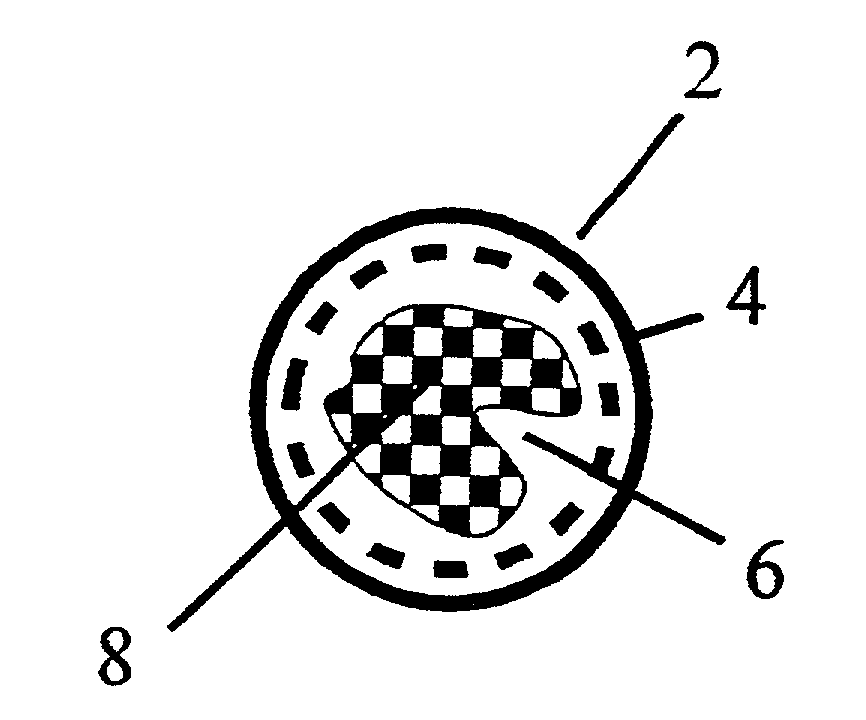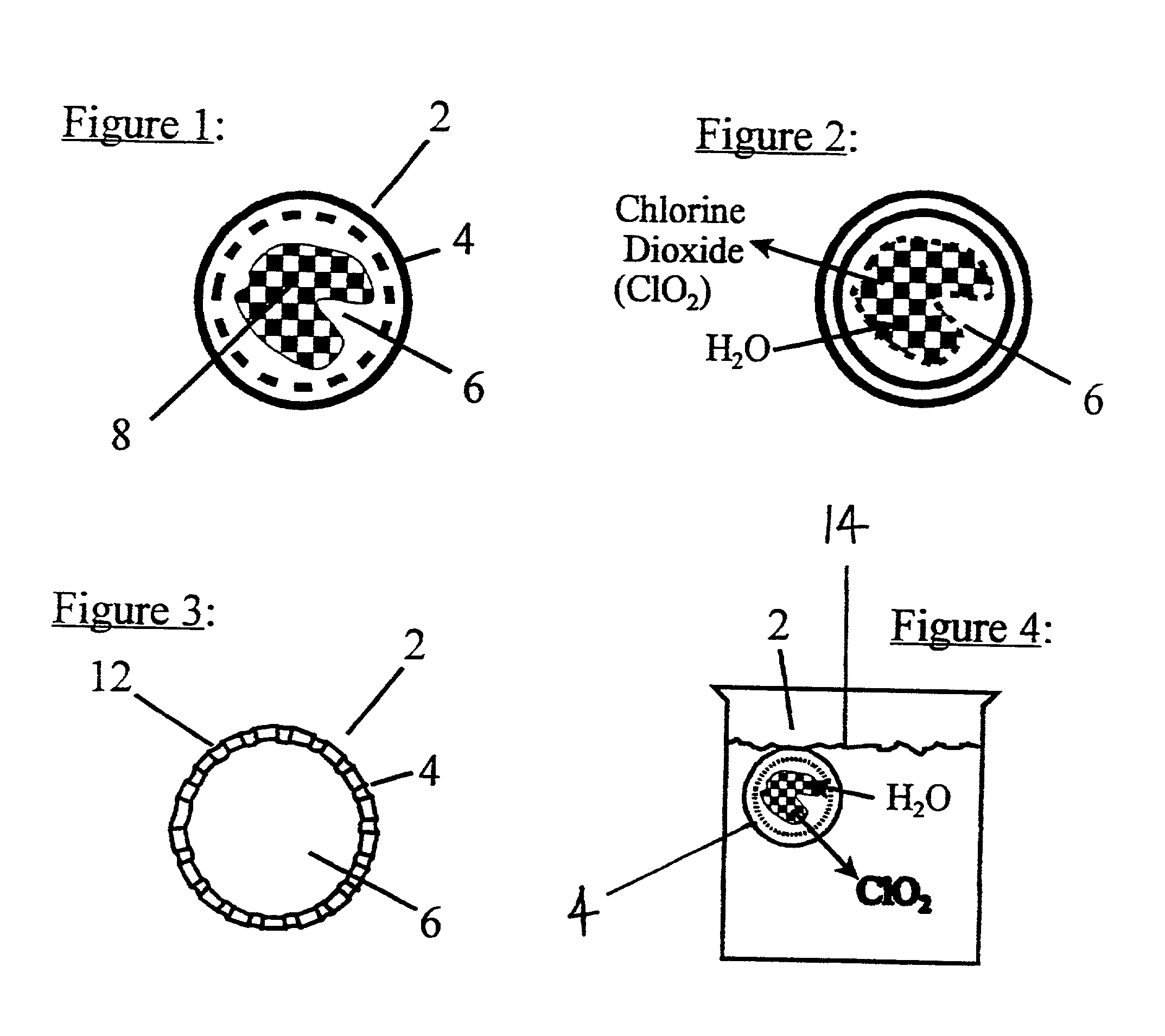Method and device for the production of an aqueous solution containing chlorine dioxide
a technology of chlorine dioxide and aqueous solution, which is applied in the direction of detergent compounding agents, halogen oxides/oxyacids, other chemical processes, etc., can solve the problems of high operator skill, inability to manufacture chlorine dioxide gas and ship under pressure, and conventional methods of on-site manufacture require not only expensive generation equipment, but also high operator skill
- Summary
- Abstract
- Description
- Claims
- Application Information
AI Technical Summary
Benefits of technology
Problems solved by technology
Method used
Image
Examples
example 1
[0081]Three hundred (300) grams of synthetic Y zeolite (Si / Al=2.7) was ion exchanged with 1000 ml of ammonium sulfate (5 Wt. %) solution at 70° C. for 3 hours. After exchange, the solid material was filtered and washed with deionized water. This procedure was repeated twice more and then the washed ammonium form zeolite was dried at about 100° C. and calcined at 450° C. for 5 hours under flowing air to produce calcined HY zeolite.
[0082]Two hundred (200) grams of calcined HY zeolite was mixed with 27.5 grams of dried technical grade sodium chlorite in a glove bag at room temperature to produce a dried reactant mixture.
[0083]One (1) gram of the dried reactant mixture was placed in a Tyvek sachet and sealed. This sachet was then immersed in 500 ml of deionized water (pH 6.3) in a closed glass bottle. After 15 minutes, the solution developed a yellow color due to the release of chlorine dioxide from the sachet into the water and yellow color reached its maximum intensity about 2 hours i...
example 2
[0086]One hundred twenty (120) grams of calcined HY zeolite made as in Example 1 was mixed with 30 grams of dried technical grade sodium chlorite in a glove bag. One gram of this mixture was sealed in a Tyvek sachet and tested as described in Example 1. It yielded a solution containing about 85 mg / l of free molecular chlorine dioxide with a Chlorine Dioxide to chlorite anion ratio of about 40. Ten (10) grams of the mixture generated a concentration of about 880 mg / l of chlorine dioxide in solution.
example 3
[0087]A. Six hundred twenty-five (625) grams of metakaolin microspheres were impregnated with 60 ml of concentrated sulfuric acid and 500 ml of water. The wet material was dried at 120° C. for 8 hours and crushed and sieved. The resultant dried acid treated metakaolin microspheres were crushed and screened to a size range of between about 44 to 74 microns in diameter.
[0088]B. Sixty-five (65) grams of anhydrous calcium chloride were mixed with the 625 grams of acid treated metakaolin microspheres and the mixture was dried at 200° C. for 3 hours. While still warm (nominally about 60° C.), the resultant dried mixture of calcium chloride and acid treated metakaolin microspheres was sealed in a glass jar and allowed to cool to room temperature.
[0089]C: Sixty (60) grams of dried technical grade sodium chlorite were mixed with the dried mixture of calcium chloride and acid treated metakaolin microspheres in a glove bag and the resultant reactant mixture was stored in a sealed glass jar.
[00...
PUM
 Login to View More
Login to View More Abstract
Description
Claims
Application Information
 Login to View More
Login to View More - R&D
- Intellectual Property
- Life Sciences
- Materials
- Tech Scout
- Unparalleled Data Quality
- Higher Quality Content
- 60% Fewer Hallucinations
Browse by: Latest US Patents, China's latest patents, Technical Efficacy Thesaurus, Application Domain, Technology Topic, Popular Technical Reports.
© 2025 PatSnap. All rights reserved.Legal|Privacy policy|Modern Slavery Act Transparency Statement|Sitemap|About US| Contact US: help@patsnap.com


